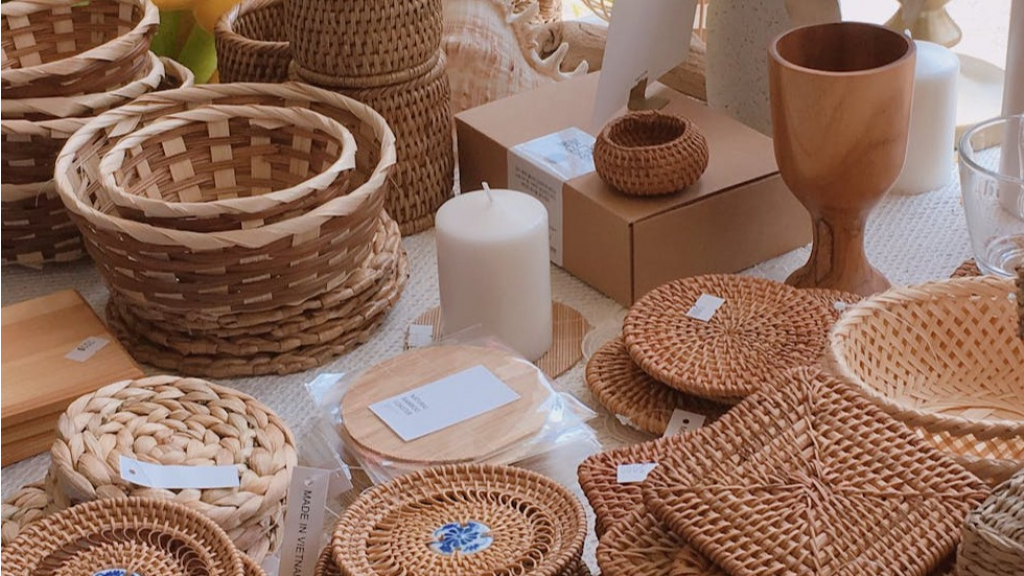Sustainability has become a major focus in the e-commerce industry, with consumers increasingly looking for eco-friendly, ethically made products that support local artisans. This shift in consumer behavior has led to the rising popularity of sustainable handicrafts in online markets.
With growing awareness about environmental issues, buyers are choosing handmade, sustainable products over mass-produced goods. Online marketplaces provide a powerful platform for artisans and small businesses to reach these eco-conscious consumers. This blog explores why sustainable handicrafts are gaining traction and how online markets are driving this transformation.
The Rise of Eco-Conscious Consumers
Modern buyers are more aware of their environmental impact and actively seek sustainable products. Many consumers now prefer to purchase items that are:
- Made from natural, organic, or recycled materials
- Produced using ethical and sustainable practices
- Free from excessive plastic packaging
- Supporting local artisans and traditional craftsmanship
This shift in mindset has contributed to the growing demand for sustainable handicrafts in online marketplaces, where consumers can conveniently explore and purchase eco-friendly products.
Handmade Products Reduce Waste and Pollution
Mass production often leads to excessive waste, pollution, and unethical labor practices. Large-scale manufacturing relies heavily on synthetic materials, excessive energy consumption, and non-recyclable packaging, all of which harm the environment.
In contrast, sustainable handicrafts are:
- Made using natural or upcycled materials like bamboo, jute, clay, and recycled fabric
- Produced in small batches, reducing waste and overproduction
- Packaged with biodegradable or minimal materials to avoid plastic waste
For example, handmade jute tote bags have become a popular alternative to plastic bags. Consumers appreciate these products for their style, durability, and environmental benefits.
Supporting Local Artisans and Traditional Crafts
Sustainable handicrafts not only benefit the environment but also help preserve cultural heritage and traditional craftsmanship. Many artisans use age-old techniques passed down through generations, contributing to a rich cultural legacy.
Some traditional handicraft techniques gaining recognition include:
- Block printing – India
- Hand weaving – Nepal, Peru
- Bamboo and cane crafting – Southeast Asia
- Wood carving – Africa, Latin America
By purchasing sustainable handmade products, consumers directly support artisans, ensuring fair wages and preserving traditional crafts. This movement encourages fair trade and prevents the decline of heritage skills due to industrialization.
Online Marketplaces Make Sustainable Handicrafts More Accessible
Previously, artisans had limited opportunities to sell their handmade products beyond local markets and craft fairs. Today, online multi-vendor marketplaces provide them with global reach.
Some popular platforms for sustainable handicrafts include:
- TrendzExhibitions.com – A marketplace dedicated to handcrafted and eco-friendly products
- Etsy – A global platform connecting artisans with buyers looking for unique handmade goods
- Amazon Handmade – A specialized section within Amazon for handcrafted items
These platforms allow artisans to showcase their products, tell their brand story, and connect with eco-conscious shoppers worldwide—without needing a physical storefront.
Social Media and Influencer Marketing Drive Demand
Social media plays a key role in boosting demand for sustainable handicrafts. Platforms like Instagram, Pinterest, and TikTok help artisans showcase their handmade products to a global audience.
Factors contributing to the rise of sustainable handicrafts on social media include:
- Influencers promoting eco-friendly and ethical brands
- Viral hashtags like #SustainableLiving and #HandmadeWithLove
- Behind-the-scenes content highlighting craftsmanship and sustainability
For example, a handmade ceramic mug featured in a social media post with a detailed description of its eco-friendly production process can attract thousands of potential buyers. This engagement helps artisans build a loyal customer base and increase sales.
The Future of Sustainable Handicrafts
As sustainability continues to gain traction, the demand for eco-friendly handicrafts is expected to grow. Key trends shaping the future of sustainable handmade products include:
- Increased use of eco-friendly packaging materials
- Rising demand for upcycled and zero-waste crafts
- Expansion of online marketplaces focused on sustainability and fair trade
For artisans and sellers, this presents an opportunity to build a strong brand around sustainability and attract environmentally conscious consumers. With more online platforms catering to this niche, now is the perfect time to invest in sustainable handmade products.
Conclusion
Sustainable handicrafts represent a shift toward ethical consumerism and environmentally responsible shopping. As more people seek handmade, eco-friendly products, online marketplaces play a crucial role in supporting this movement.
For artisans and sellers, embracing sustainability is a valuable strategy for building a unique brand identity and attracting a loyal customer base. The rising interest in sustainable products provides a significant opportunity for small businesses to thrive while positively impacting the planet and preserving traditional craftsmanship.
With eco-conscious consumers on the rise and online marketplaces making sustainable handicrafts more accessible, the future of this industry looks promising. Now is the time for artisans and entrepreneurs to leverage this trend and contribute to a more sustainable and ethical world.




Share this via
Or copy link